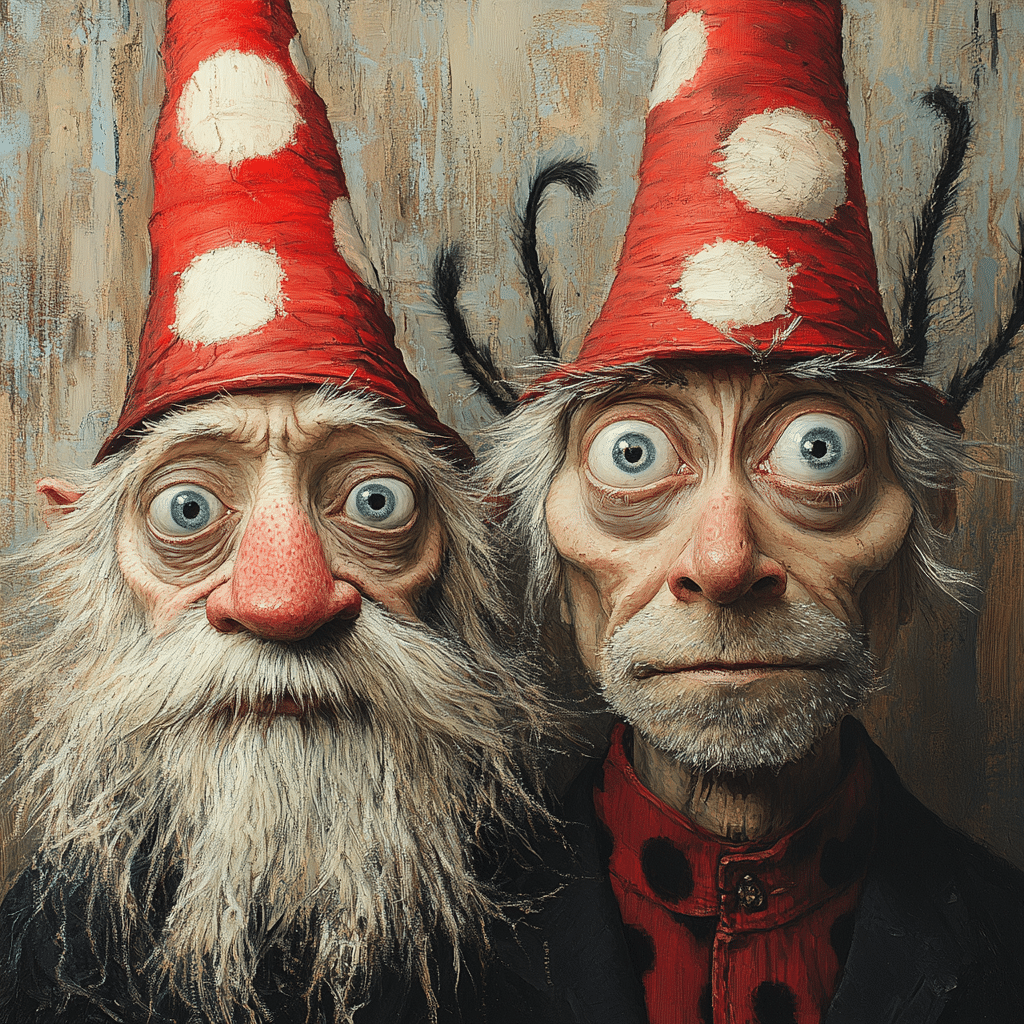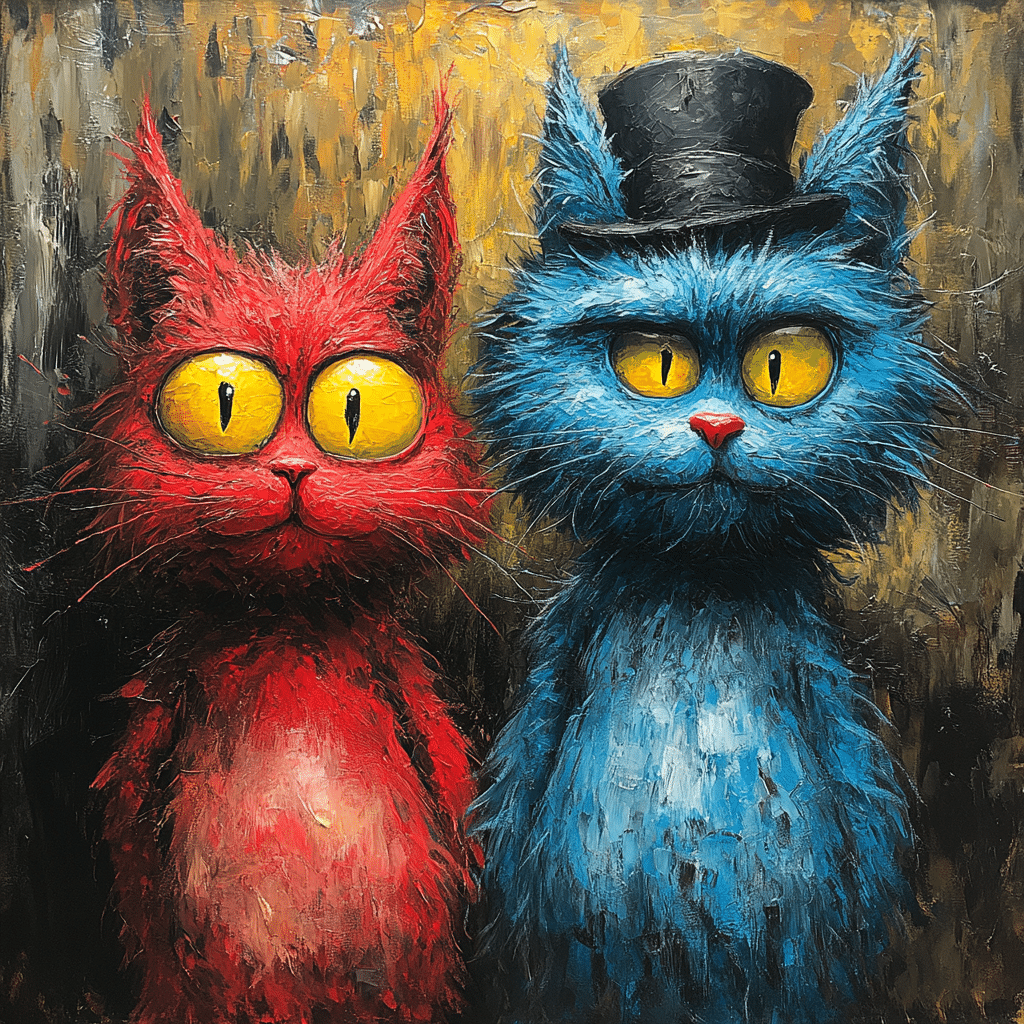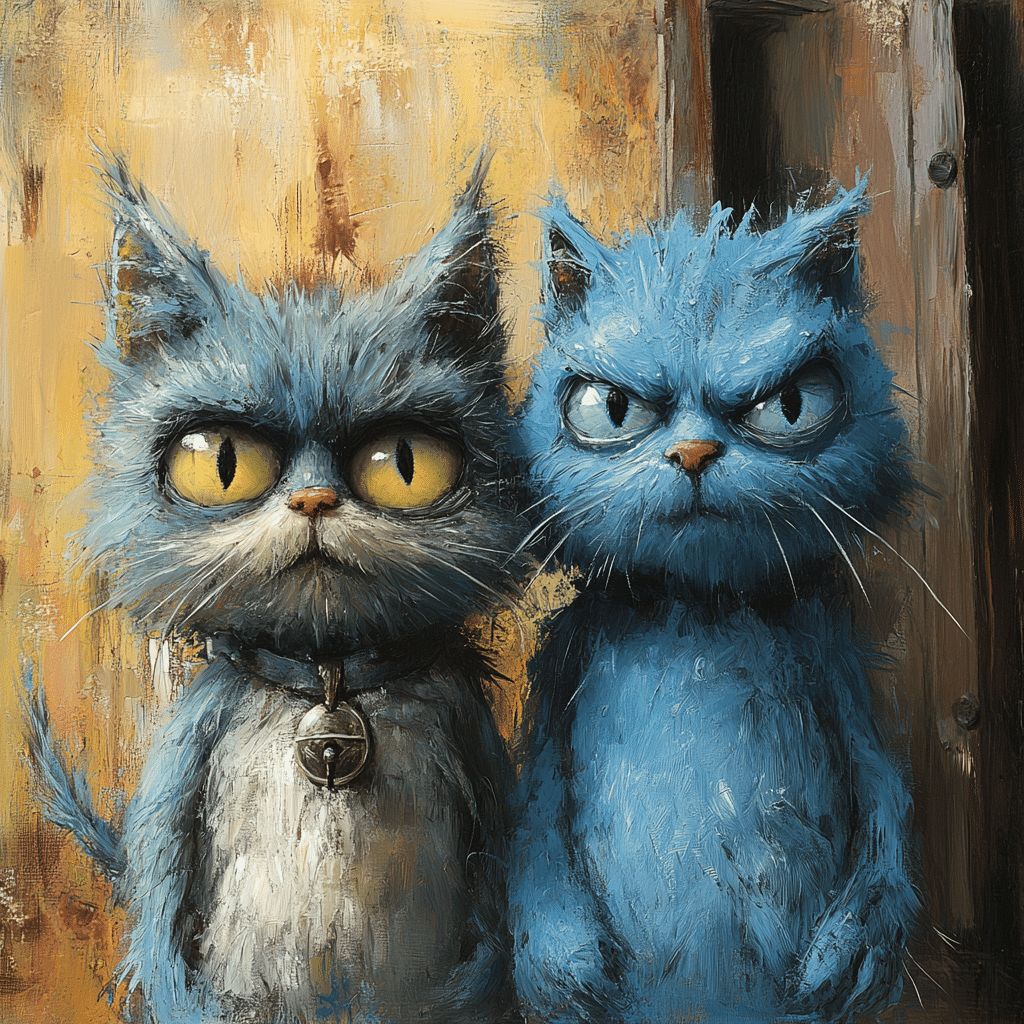From the whimsical pages of Dr. Seuss’s The Cat in the Hat, those energetic siblings, Thing One and Thing Two, have swiftly become symbols of chaos, imagination, and pure childhood fun. They brilliantly illustrate the spirit of mischief we all recognize, giving parents a chuckle (or a headache) as they remember their own wild adventures. In this article, we’ll dive into seven iconic moments where Thing One and Thing Two stirred up chaos in children’s adventures, shedding light on their cultural significance and how they resonate in today’s world. So grab your popcorn and let’s jump into the delightful mayhem!

1. The Classic Cat in the Hat: A Mischief-Centric Tale
In the original The Cat in the Hat, the foundations of Thing One and Thing Two are laid down like a delightful mess on a rainy day. This story introduces kids to chaos—showing both the fun and lessons that come with it. It’s a vivid portrayal of childhood abandon where rules are bent and creativity runs wild. The duality of chaos vs. order reflects an essential part of growing up in America vs. more structured societies. The sheer joy and frustration dance together, making the chaotic adventure a hallmark of American children’s literature.
This tale has sparked countless adaptations. Who could forget Mike Myers’ eccentric portrayal in the 2003 film The Cat in the Hat? Or the charming 1971 animated special? They each highlight how Thing One and Thing Two can coax out giggles and groans from parents, blending mischief and a hint of anxiety about what happens next. It’s a unique lens to view childhood as an intricate balance of fun and responsibility, which many cultures view through their own distinct prisms.
As we consider Thing One and Thing Two, we can appreciate how they inspire creativity in kids. Unlike more constrained narratives often found globally, they encourage imaginative play. So, are we better off letting kids run wild in their imaginative worlds, or should we find a middle ground? That’s a big question lingering in many parenting circles today.

2. Living Room Takeover: Real-Life Parallels in Childhood Play
How often does your living room transform into the site of an imaginative expedition? Think about it; kids morph furniture into spaceships or jungles. This vividness echoes the essence of Thing One and Thing Two. Their rabble-rousing antics aren’t just contained within the pages of a book—they resonate with real families everywhere, faced with the joyful havoc their children create.
Practicality meets playfulness with brands like IKEA, tapping into this chaos by creating multifunctional furniture that encourages parents to embrace imagination rather than suppress it. By allowing children to turn their surroundings into wonderlands, we tap into fundamental aspects of creative growth. But it raises an interesting discussion: Is this freedom universal, or are there cultural nuances where boundaries often resist such lively chaos?
Children’s messy art projects or spontaneous pillow forts fundamentally reflect how society views creativity. Sweet havoc at home can offer kids a sense of ownership over their space and thoughts. And really, who wouldn’t trade a few crooked toys and the occasional knockdown for a sky-high imagination?
3. Theme Park Shenanigans: Adventures with Thing One and Thing Two
Step into the marvelous world of Seuss Landing at Universal Studios, where Thing One and Thing Two come to life, and chaos reigns supreme! The thrill of meeting these rascals brings a genuine smile to the faces of children and parents alike. Imagine grabbing that first ride on the Cat in the Hat attraction, where the movement embodies the pure chaos these characters symbolize.
Now, compare this experience to attractions like Epcot’s educational rides, which focus on discipline and informative experiences. The stark contrast has sparked quite the debate: Do we encourage creativity with adventure, or do we impart structure through education? The dichotomy prompts parents and children alike to weigh their choices between embracing the lighthearted chaos of characters like Thing One and Thing Two, or adhering to the organized environment provided by more instructional parks.
Theme parks showcase how these characters serve as gateways to broader exploration of imagination. It allows children to see the merit in letting loose and enjoying the wild ride of life. The energy is palpable, and each bemused parent must ponder: Are we nurturing joy or fostering trouble? The beauty of the dilemma lies in its endless possibilities!
4. Innovation in Non-Traditional Learning: The Chaos Factor
In the evolving landscape of education, schools across America are embracing innovative methodologies that channel the chaotic creativity embodied by Thing One and Thing Two. Techniques like project-based learning (PBL) encourage students to explore freely, ultimately leading to creative, albeit chaotic, outcomes. This evolution in educational philosophy gives rise to pivotal discussions within classrooms: yes or no? Should we fully embrace the wonderful messiness that comes with inspired thinking?
The push towards creativity in learning environments shows that students thrive when given the freedom to experiment. While some might argue that structure benefits learning, others would contend that letting kids wander through their imaginations produces the thinkers and creators of tomorrow. Thing One and Thing Two exemplify this very spirit, reminding us that sometimes, a little chaos is just what the doctor ordered for fostering innovation.
Imagine classrooms where ideas blossom amid colorful chaos! Visually appealing messes of paint, papers, and sounds of laughter become symphonies of creativity. It’s a transformative experience that could redefine how we think about education, making innovation not just a goal but a daily reality.
5. The Legacy of Chaos in Children’s Literature
Dr. Seuss didn’t just write stories; he changed the landscape of children’s literature, forging a path of whimsy that’s absorbed by the minds of young readers. Characters like Thing One and Thing Two introduced wild bursts of creativity that retained a respect for imagination’s critical role in growth. Today, how do modern stories like The Bad Seed or The Day the Crayons Quit hold up against the backdrop of Seuss’s chaotic narrative?
While contemporary literature has adapted these narratives, they often highlight consequences that Seuss’s tales sidestep. This notable difference in tone begs the question of whether the chaotic adventuring spirit is being stifled in current culture. Are young readers losing sight of limitless imagination, or are we merely redefining the meaning of creative chaos?
We might wonder whether modern authors feel pressured to weave structure and morals into their chaos. It raises the important question of balance: How do today’s stories inform children’s understanding of fun, exploration, and play? Are we still creating whimsical adventures worthy of Thing One and Thing Two or are we losing their spirit in polished narratives?
6. Social Media’s Reflection of Childhood Chaos
Fast forward to today’s world, and you’ll find parents capturing and sharing the chaos of their children on platforms like TikTok. Videos featuring antics reminiscent of Thing One and Thing Two rack up millions of views, highlighting a cultural shift towards embracing imaginative play in the digital realm. But does this online play encourage children’s real-world adventures, or does it push them into a virtual corner instead?
While digital amusement offers a modern twist on classic childhood chaos, it also opens the door to scrutiny. Are parents fostering genuine experiences, or are kids trading tangible play for fleeting online fame? As we navigate these waters, it becomes crucial to consider how social media’s whimsical portrayals of chaos reflect and influence our perceptions of childhood joy.
The balance between digital and real-life chaos lies at the heart of many discussions. The hilarity of encouraged mischief, juxtaposed with the desire for authentic exploration, begs the question: Are the daring acts of Thing One and Thing Two transcending generations, or being co-opted by ever-greater expectations for digital presence?
7. Parental Perspectives: Embracing vs. Resisting Chaos
Through the lens of Thing One and Thing Two, the debate surrounding parenting styles hits a fever pitch. Should parents lean into the delightful chaos of childhood, embracing it as part of development, or should they impose structure to carve out discipline? Psychological studies shine light on this discussion, revealing that environments welcoming chaos can positively impact child development.
Traditionally, parenting has swung between the uptight and the loose, with experts often advising a harmonious blend of both philosophies. Yet the whimsical antics of Thing One and Thing Two challenge concepts of discipline and structure; perhaps they present a compelling case for celebrating chaos in all its messy glory. The added pressure of ‘yes or no’ when balancing these techniques continues to confuse many parents searching for the right formula.
Why not embrace the quirkiness and give kids the freedom to explore their chaotic instincts? Allowing children the opportunity to engage in imaginative play could be the key to nurturing well-rounded, out-of-the-box thinkers. The legacy of Thing One and Thing Two might just be the reminder needed to redefine childhood bliss in embracing chaos!
There you have it—Thing One and Thing Two lead us through a kaleidoscope of childhood chaos, creativity, and exploration. They represent our fondest desires to imagine without limits while inviting necessary discussions on how culture impacts our understanding of fun and play in a chaotic world. So the next time you find yourself caught in a whirlwind of messy adventures, remember that Thing One and Thing Two are there cheering you on, adding an indelible mark on our cultural understanding of exploration and playful chaos.
Thing One and Thing Two: Chaos in Childhood Adventure
A Whirl of Colorful Mayhem
Thing One and Thing Two, those mischievous, blue-haired siblings from Dr. Seuss’s “The Cat in the Hat,” are beloved icons of childhood mischief. Their antics not only bring joy to young readers but also serve as a powerful reminder of the spirit of fun and adventure. Did you know that while the characters might be a whimsical creation, Dr. Seuss drew inspiration from his own childhood experiences? This connection to his past adds depth to their chaotic shenanigans, making us all feel a little nostalgic. Speaking of nostalgia, Thanksgiving Nfl Games often remind us of family gatherings where we might reflect on similar whimsical moments.
The Origins of Their Mischief
Seuss was a master at intertwining humor with life lessons. The chaos created by Thing One and Thing Two symbolizes the joys and challenges of parenting—a perfect chance to loosen up and embrace laughter in the face of disorder. Interestingly, the exact phrase “Thing One and Thing Two” resurfaced in pop culture, inspiring various references—including a recent playful nod in The Conners Season 6. Just like the party spirit of jungle Boys, their unpredictability represents that carefree, audacious energy we sometimes wish we could harness in our daily lives.
Chaos with a Purpose
Another fact worth noting is that the aesthetic of Thing One and Thing Two sparks imagination; their vibrant red and blue costumes were intentionally designed to contrast the decorum of the home they invade. Indeed, the visuals and their exploits have inspired countless adaptations, including artwork and Broadway productions. If you ever wondered how characters from children’s literature find their way into adult entertainment, you’d be intrigued to know that the creative liberties some might take with Milf Pornstars share parallels with the playful chaos embodied by these iconic figures. Just as parents find joy in witnessing their kids immersed in Seuss’s universe, the whimsy of Thing One and Thing Two serves as a reminder of the joy and spontaneity that life can hold—much like rediscovering Our Secret Diary from childhood filled with silly escapades.
Unlocking the timeless fun of Thing One and Thing Two showcases not just their adventurous spirit but also reflects essential childhood values that resonate through generations. So, when seeking a dose of chaos and laughter, remember these two iconic characters and the beautiful mess they represent!





